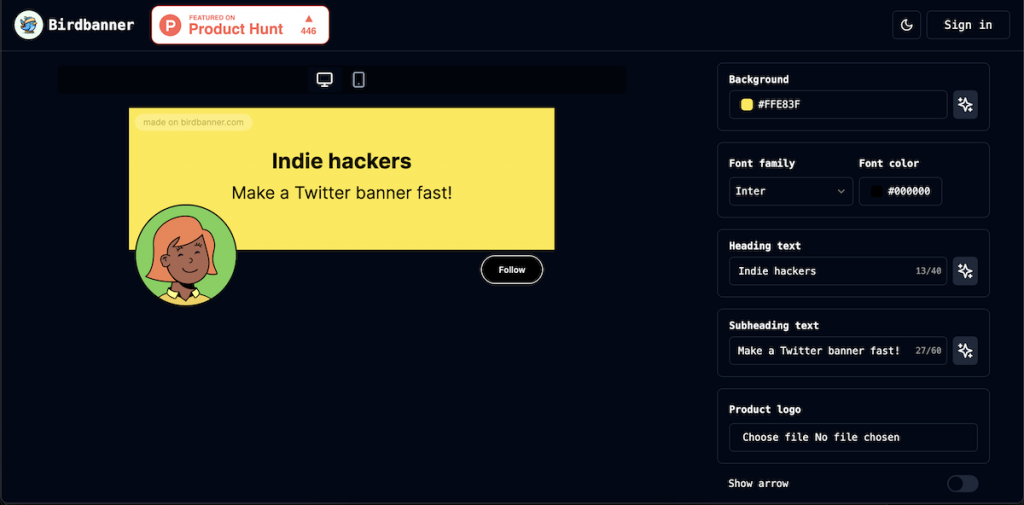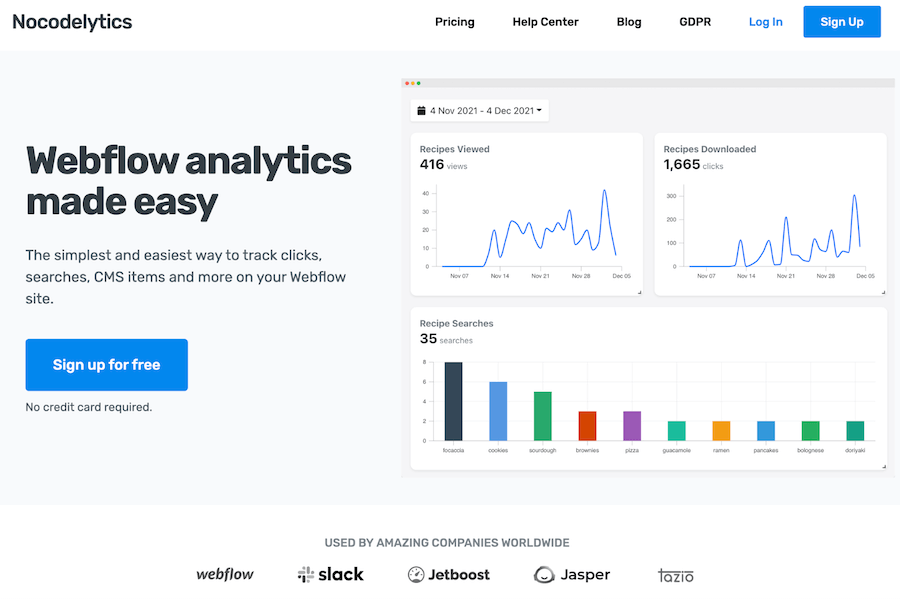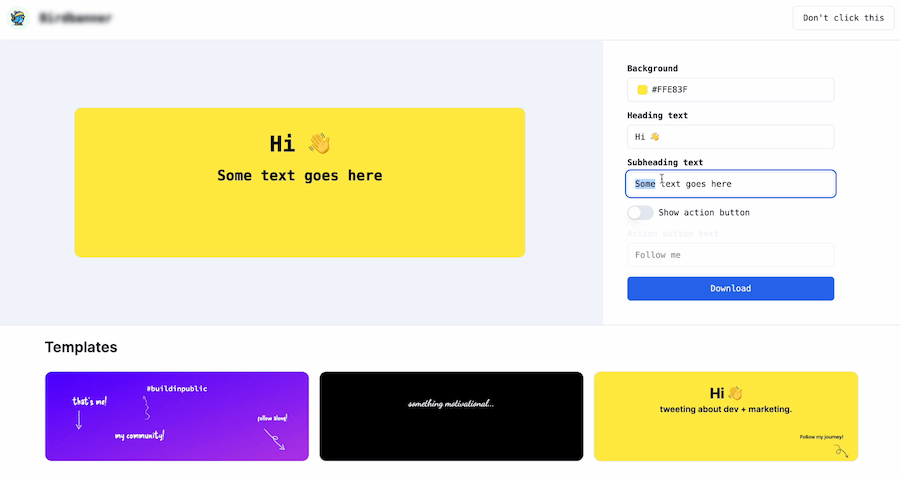The easiest way to create twitter banners? Yes, I’m still calling it Twitter even though it’s rebranded as X. In this interview I’m chatting with @sarwech who has taken the Twitter / X world by storm recently.
Creating banners for Twitter / X
With what you might ask? A new app called Birdbanner – Sarwech was kind enough to spend time answering my questions. Before we get to the interview, let’s take a look at the app and why it’s important

What do I like about it?
- It’s ridiculously easy to use, I can change colours, change text and arrow styles to the follow CTA.
- There’s no analysis paralysis that you might see if you try and create a banner from a Canva template or with PlaceIt (I’m not scrolling for days trying to see which I want).
- It’s reasonably priced – too low in my opinion. You can’t even buy a good cup of coffee these days for $5.
What pain points does it solve?
- You may want to change your Twitter banner frequently
- You don’t have much time and want a simple interface
- You don’t want to pay for a full design suite license (like Canva Pro)
Why this tool matters?
The easiest way to create Twitter banners matters because it saves time and effort for users. With the new app called Birdbanner, users can easily design and customize their banners without the need for professional design skills. This accessibility and simplicity make it convenient for individuals and businesses to enhance their Twitter/X profiles with visually appealing banners.
Here’s the interview
Hello World! Tell me a bit about yourself, where are you based and what got you into indie hacking?
Hello! My name is Sarwech, I’m based in London and I first learned about indie hacking a few years ago. I actually graduated in law, worked in corporate finance and banking for a while before realising it wasn’t for me – much more interested in building things with my own hands.
I joined a tech startup in 2017 as basically the COO’s right-hand man and got a glimpse into all aspects of a startup: product, growth, biz dev, legal, HR etc. Discovered indie hacking in 2018 and decided to go all in on coding (as I’m not very good at building physical products haha) and since then I’ve worked on numerous projects.

Bird Banner isn’t the first Twitter banner tool, Canva, PlaceIt and BrandCrowd spring to mind. What customer pain points did you discover which led to Bird Banner?
The main reason that Birdbanner exists is actually because I had been on Twitter for a month or so and realised I still didn’t have a banner. When I looked at Canva (actually hadn’t heard of the other two) I was quite overwhelmed by the options and figured others might be too.
Here’s a screenshot of Birdbanner before I revealed the name:

So I decided to spend a few days and built a simple tool that helped people quickly make a banner. Another reason for building Birdbanner was that, since I wanted to grow on Twitter, having a tool built for Twitter users seemed to be a good way to help others out and possibly meant I could grow my audience faster.
Bird Banner isn’t your first startup on your profile are you still developing Image to GIF?
I’m still working on Image to GIF and occasionally ship features for it but my main focus for the past month has been Birdbanner. I do think Image to GIF has a lot of potential, namely that a lot of online video editing tools have become cumbersome or filled with ads, so I’d like to work on it some more.
On Twitter, you mention an exit. How did that come about, can you share more about that story?
Sure, as mentioned I previously worked on Nocodelytics. The story is actually quite interesting because it highlights one of the things indie hackers are known for but it worked out OK in the end. I had a project made in Webflow, a no-code tool to build websites with, and wanted to see event analytics (like Segment/Mixpanel).
I quickly found out that Webflow’s analytics were non-existent and a lot of existing tools were either too complicated for no-coders or too simple (like GA). So I built a landing page to gauge interest and within a couple of weeks got almost 100 signups on the waitlist. Seeing this as validation, I built an MVP which took off and got traction.
I ended up bringing a co-founder onboard and we worked on it together for almost 3 years, growing it to hundreds of customers and thousands of installed websites. In the end I wanted to move onto other things as analytics wasn’t something I was passionate about (it was something I stumbled into) and sold it.
What keeps you up at night? Your biggest challenge navigating software creation.
There’s a famous Steve Jobs quote that you can’t know how to connect the dots in your life until you’ve actually lived the experiences. Only then can you do it with hindsight. So what keeps me up at night is knowing which dots to actually place and where to place them.
What’s next for Sarwech?
My goal for this year is to make a full-time living off of indie hacking, so I can invest more time into projects that I deeply care about. In the short term this means hitting $100k ARR by the end of the year, so I can take care of my family and travel the world (something we love to do). It’s a pretty lofty goal considering I’m starting from zero!
I’ve also got a few fun goals I’ve shared on Twitter (for transparency and accountability) which I hope to hit this year.
In the medium term, my goal is to work on a more ambitious and impactful (5-10 year) project, combining software and hardware. Long term, my goal is to work on a legacy building project that can last decades and go to the moon (literally), as space is a big passion of mine!

Leave a Reply